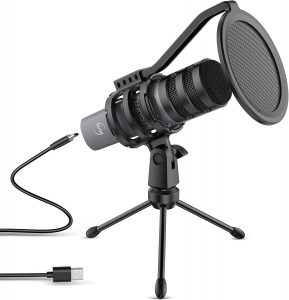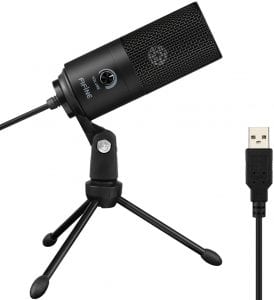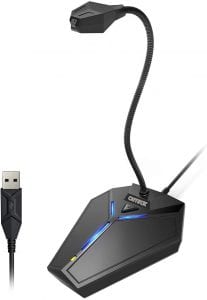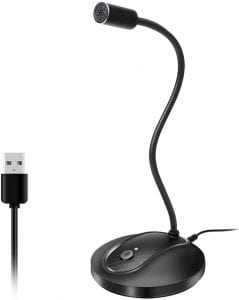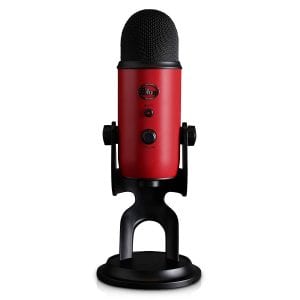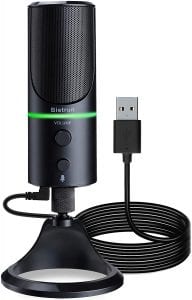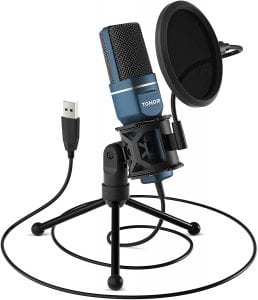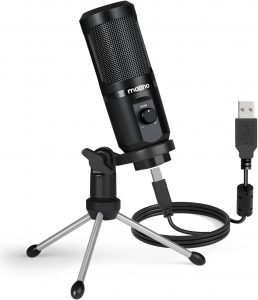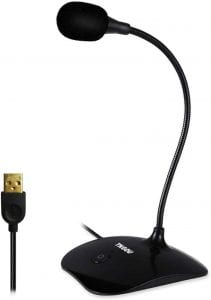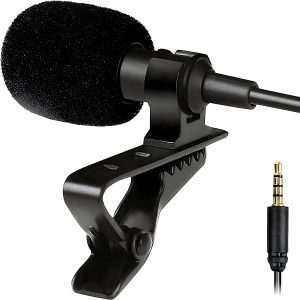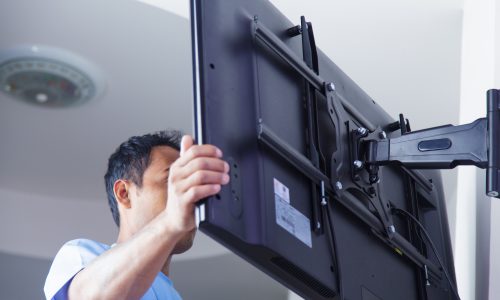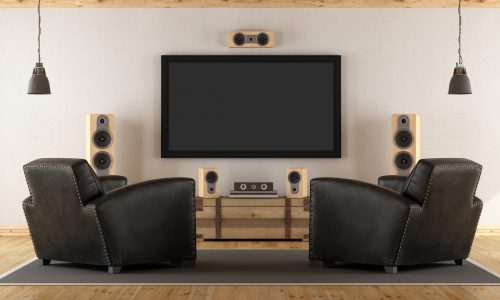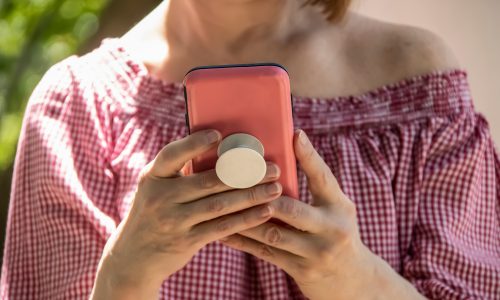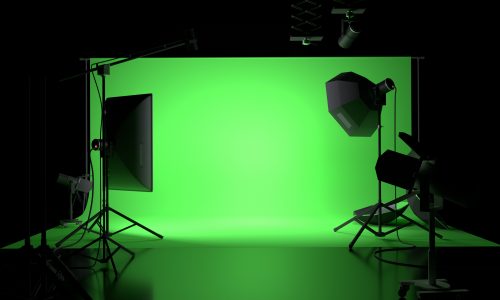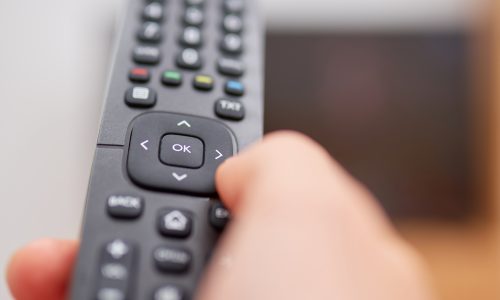The Best Laptop Microphone

Our Review Process
Don't Waste Your Money is focused on helping you make the best purchasing decision. Our team of experts spends hundreds of hours analyzing, testing, and researching products so you don't have to. Learn more.
Our Picks For The Top Laptop Microphones
- 1. Zekpro Plug & Play Omnidirectional Laptop Microphone
- 2. ZINGYOU Unidirectional Volume Control Laptop Microphone
- 3. Fifine K669B On-Line Adjustable Volume Laptop Microphone
- 4. CMTECK Corded Laptop Microphone
- 5. JOUNIVO USB Goosneck Laptop Microphone
- 6. Blue Yeti USB Microphone
- 7. Bietrun Noise Cancelling Laptop Microphone
- 8. TONOR TC-777 Plug & Play Easy Install Laptop Microphone
- 9. MAONO PM461TR USB Flexible Laptop Microphone
- 10. TKGOU Voice Activated Personal Laptop Microphone
- 11. Movo Universal Lavalier USB Laptop Microphone
Whether you plan on gaming or participating in Zoom calls for work, this laptop microphone is designed to meet your needs. It features a built-in sound card and simply needs to be plugged in to work. You'll especially love the flexible gooseneck, as it allows for positioning the microphone exactly where you want it.
Economical OptionWhen shopping on a budget, this affordable laptop microphone is the way to go.
This laptop microphone has been upgraded to capture your voice while minimizing any background noise. It's compatible with Windows, Linux and macOS, and is perfect for recording, gaming and office video chats. The microphone is USB-powered and outfitted with volume sensitivity controls.
Multiple Color OptionsYou'll find this laptop microphone comes in a choice of gray, black or silver.
Whether you're using it for gaming, podcasting or video calls, this laptop microphone holds up against more expensive models. It picks up sound at a distance without bringing in undue background noise. The included stand works on most any surface.
Solid PickThis all-purpose mic can be placed most anywhere and still deliver quality audio.
Setup is simple for almost anyone on this USB mic. The wide base means you can adjust it easily on any surface. Sound quality holds up well against most major models and the mute button is a plus.
Simple SetupThis durable laptop microphone provides impressive sound quality and striking design.
Buying Guide
You’re used to seeing and hearing the world through your computer, but what happens when it’s time for people to hear you? Whether you’re chatting with teammates in your favorite first-person shooter or putting your talents out there with your first podcast, there comes a time when the tiny mic next to your camera just won’t do. Trading up to a full-fledged laptop microphone can be a small step in terms of cash, but it can pay off big in sound quality.
The first obstacle you’ll encounter when shopping for a microphone of any kind is a fair amount of jargon. So before you run screaming to your roadie cousin, let’s break down some of the common features of a laptop microphone.
First, there’s the connection. While you may find some wireless models that connect to your computer by Bluetooth, most mics will plug into your laptop by a USB cable. You can expect the USB versions to have superior sound quality, though the difference might be negligible if you’re using the mic for gaming or casual chats. Most USB mics have a couple of important built-in circuits: An A/D converter and a preamp. The A/D converter takes the analog sound captured by the mic and turns it into a data file that your computer can easily work with. The preamp boosts the signal so that your voice (or whatever you’re recording) comes out more or less the way you hear it — no mixing board required.
Then there’s the way these microphones actually capture sound. Most USB microphones are condenser mics that use a quick-moving diaphragm that interacts with a fixed backplate. Without getting too technical, the interaction between those two components allows a good condenser mic to capture even the smallest sounds in the general vicinity. That’s ideal if you’re gaming or chatting on a voice call in a quiet room. No matter which way you bob, weave or recline, you can be sure the microphone will pick up your voice.
You can also find dynamic laptop microphones, though they are rarer (and generally a bit more expensive). These mics don’t pick up quiet noises as easily, but they are great at effectively translating louder sounds in a wide area. As such, they are best for recording live music and other atmospheric sounds. For a laptop user, that means podcasting with a lot of guests or recording outdoor scenes.
The way these microphones pick up ambient sound can be further refined by their polar pattern or pickup pattern.
Omnidirectional mics, as you might imagine, pick up sound from all around the microphone, in all directions. Again, a great option if you don’t expect a lot of background interference.
Cardioid microphones pick up sound mainly from the front, with less interference from the side and hardly any pickup from the rear. This is ideal for solo podcasters or those on an important zoom call.
Bi-directional mics can catch sound from the front of the mic and the rear, but very little from the sides. This is a great budget option for podcasters who do a lot of one-on-one interviews.
Some higher-end microphones will even be able to switch between polar patterns, allowing you to suit your pickup to the occasion. If you plan on recording professional-grade vocals, you may want to consider a more dedicated microphone that can jack directly into a mixing board. But for versatility and ease of use, nothing beats the latest USB mics.
What to Look For
Want a little refinement on those vocals, especially when it comes to spoken word? You might want to invest in a pop filter for your microphone. These thin screens guard the mic against plosives, which is a fitting term for those tiny “pops” caused by fast-moving air. They tend to happen most often when people sharply pronounce the “p” sound, and they can be an almost subliminal source of irritation for sensitive listeners.
More to Explore
The device we think of as a microphone wasn’t invented until the 1870s, but the term was coined long before that by English inventor Sir Charles Wheatstone in 1827. His invention of the telegraph was just one of his forays into the study of sound, and Wheatstone was one of the first scientists to recognize that sound traveled in waves. It would be decades later before Emile Berliner collaborated with a scrappy American inventor named Thomas Edison on a crude voice transmitter for his nascent telephone.



